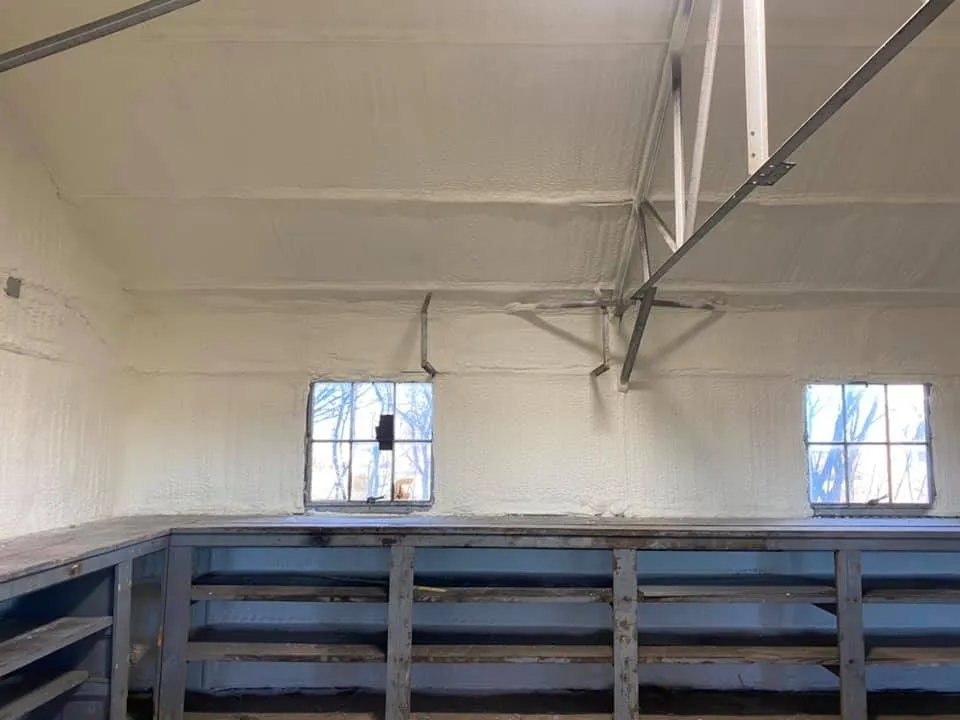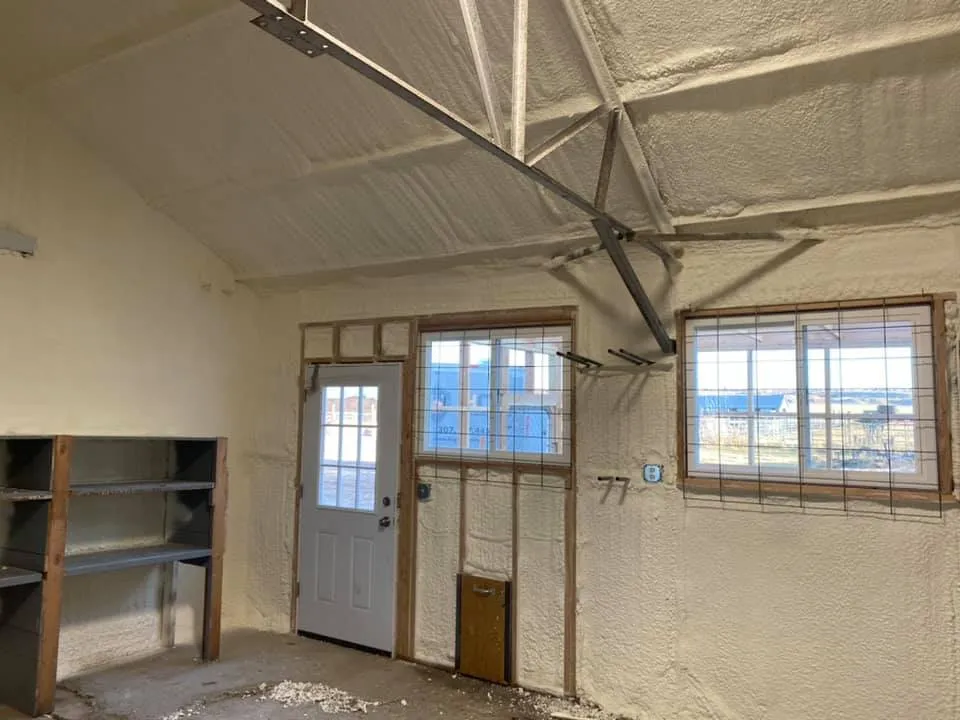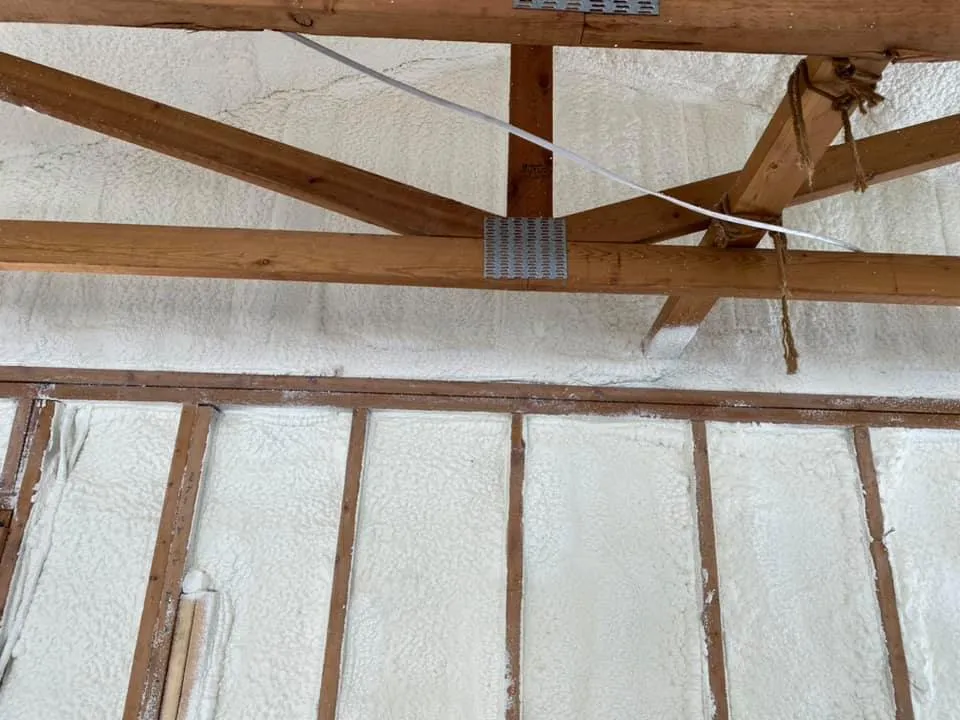
Imagine coming home after a long day to a house that feels drafty in winter and stuffy in summer. Or worse, discovering water damage from leaks that lead to mold growth. These problems affect millions of homeowners each year, driving up energy bills and repair costs. Spray foam insulation offers a smart way to tackle these issues head-on. It seals gaps, blocks moisture, and even helps with fire resistance, creating a more comfortable and protected living space.
At its heart, spray foam insulation is a versatile material made from two chemicals that react and expand when sprayed into walls, attics, or crawl spaces. This process forms a solid barrier that sticks to surfaces and fills every nook. Unlike traditional fiberglass or cellulose, spray foam provides an air-tight seal, which means better temperature control and fewer energy losses. Studies show it can cut heating and cooling costs by up to 50% in some homes. But its value goes further: it guards against moisture infiltration that causes rot and supports fire safety by slowing flame spread.
This guide draws from years of practical work in insulation projects across various climates. You’ll get a full breakdown of spray foam, starting with the basics and moving into specifics like types, installation, and protection features. Expect clear explanations, real examples, and tips to help you decide if it’s right for your space. Here’s what lies ahead:
By the end, you’ll have the knowledge to make informed choices about insulating your home or building. Whether you’re a homeowner planning a retrofit or someone curious about energy efficiency, this resource covers it all.
Spray foam starts as a liquid mixture of polyol resin and isocyanate, which professionals mix on-site using a spray gun. When applied, it expands rapidly, up to 100 times its original volume, into a foam that hardens quickly. This expansion lets it conform to irregular shapes, like around pipes or wiring, creating a continuous barrier.
Why pick spray foam over other options? It excels at air sealing. Traditional batt insulation often leaves gaps that let air leak, accounting for 25-40% of a home’s energy loss, according to the U.S. Department of Energy. Spray foam eliminates most of those leaks. It also acts as a vapor barrier in many cases, reducing the risk of condensation and mold.
Take a typical attic in a cold climate. Without proper insulation, warm air rises and meets cold surfaces, forming moisture that damages wood. Spray foam locks out that moisture while keeping heat inside. Homeowners report noticeable differences: rooms stay warmer without cranking the thermostat.
Data backs this up. A 2022 report from the Building Science Corporation highlights how spray foam improves overall building envelope performance, leading to healthier indoor air.
For fire safety, many formulations include additives that resist ignition, buying time for escape in emergencies. This makes spray foam a solid choice for both new construction and retrofits.
Key Takeaways:
Two main varieties dominate the market: open-cell and closed-cell. Each has unique properties suited to different needs.
Open-cell foam has an airy structure, like a sponge, with about 90% air content. It weighs less, around 0.5 pounds per cubic foot, and costs about $1 to $1.50 per board foot. This type provides good sound dampening and allows some vapor to pass through, which can work well in humid areas if paired with proper ventilation. It’s flexible and easier to cut if adjustments are needed later.
Closed-cell foam, on the other hand, forms a dense, rigid layer with tiny, sealed bubbles. At 2 pounds per cubic foot, it costs $2 to $3 per board foot but offers higher R-value, about 6.5 per inch versus 3.7 for open-cell. This density makes it a strong moisture barrier and adds structural support to walls. It’s ideal for below-grade spaces or coastal homes prone to flooding.
Here’s a quick comparison:
| Feature | Open-Cell | Closed-Cell |
|---|---|---|
| Density (lbs/ft³) | 0.5 | 2.0 |
| R-Value per Inch | 3.7 | 6.5 |
| Cost per Board Foot | $1-$1.50 | $2-$3 |
| Best For | Soundproofing, interiors | Moisture-prone areas, outdoors |
| Vapor Permeability | High | Low |
Choose based on your climate and priorities. In wet regions, closed-cell prevents water intrusion better. For budget-focused projects in dry areas, open-cell saves money without sacrificing much performance.
Market trends show closed-cell gaining popularity, with U.S. sales projected to grow 7% annually through 2028, per a Grand View Research analysis, driven by demand for durable, energy-efficient materials.
Expert Tip: Test a small area first if you’re unsure about adhesion. Open-cell sticks well to wood but may need primers on metal surfaces.
Installing spray foam requires skill to avoid waste or health risks from fumes. Professionals handle it, but understanding the steps helps you oversee the job.
First, prepare the site. Clear debris from the area and cover floors or furniture with plastic sheeting. Seal off vents to prevent foam from entering HVAC systems. Wear protective gear: respirators, suits, and gloves, as the chemicals can irritate skin and lungs.
Next, set up the equipment. A truck-mounted rig or portable sprayer delivers the two components through heated hoses to the gun. Calibrate the mix ratio, typically 1:1, for even expansion.
Apply in layers. Start at the bottom of walls or in corners of attics. Spray in short bursts, letting each pass cure for 10-20 seconds before the next. Aim for 2-3 inches thick for attics, adjusting based on desired R-value. Watch for even coverage; over-spray can block soffit vents.
After application, trim excess with a saw once cured (usually 24 hours). Inspect for gaps and touch up if needed. Finally, ventilate the space for 24-48 hours to clear odors.

Common pitfalls include uneven application, which reduces effectiveness. A study by the Oak Ridge National Laboratory found that proper training cuts installation errors by 30%.
For DIY enthusiasts, stick to small touch-ups with canned foam, but full jobs demand pros.
Expert Tip: Schedule installation during mild weather (50-85°F). Extreme cold slows expansion; heat causes over-foaming.
Key Takeaways:
Moisture is a top enemy of homes, leading to $5 billion in annual U.S. repair costs from water damage, as noted in a Insurance Information Institute report. Spray foam fights back by creating a seamless seal.
Closed-cell foam shines here. Its structure traps vapor inside tiny cells, preventing liquid water from penetrating. In a bathroom remodel, for instance, applying closed-cell around the tub stops steam from reaching studs, avoiding rot.
Open-cell allows some breathability, which helps in walls where trapped moisture could build up. But in basements, closed-cell blocks groundwater seepage entirely.
Combine spray foam with proper drainage: ensure gutters direct water away and use housewrap on exteriors. This layered approach keeps interiors dry year-round.
Real-world example: A Wyoming home retrofitted with spray foam saw zero moisture issues during heavy rains, unlike neighboring fiberglass-insulated houses that developed mold.
The National Association of Home Builders emphasizes that air barriers like spray foam reduce condensation risks by 70% in conditioned spaces.
Expert Tip: Pair foam with dehumidifiers in crawl spaces. This combo maintains relative humidity below 60%, the threshold for mold growth.
Fire safety matters in every build. Spray foam contributes by resisting ignition and limiting smoke production. Most types meet Class A fire ratings, spreading flames slower than untreated wood.
Closed-cell foam has higher resistance due to its density; it chars but doesn’t melt or drip. Open-cell burns faster but still outperforms pink fiberglass batts.
Building codes, like the International Residential Code, require thermal barriers over foam in attics, usually 1/2-inch drywall, to protect against fire exposure. Without it, foam can ignite quickly.
In tests, spray foam delayed flashover by 5-10 minutes in room simulations, per Underwriters Laboratories standards, giving occupants crucial escape time.
Don’t forget intumescent coatings for exposed areas; they swell in heat to block flames.

Recent data from the National Fire Protection Association shows foam-insulated homes experience 20% fewer structural fires when installed correctly.
Expert Tip: Verify contractor certification from the Spray Polyurethane Foam Alliance. They follow protocols that ensure fire-rated applications every time.
Spray foam does more than shield from moisture and fire. It boosts energy efficiency, cutting utility bills. The U.S. Energy Information Administration reports that well-insulated homes use 15% less energy overall.
Sound control is another perk. Open-cell absorbs noise, reducing traffic sounds by up to 50% in urban settings.
Structurally, closed-cell adds rigidity, strengthening roofs against wind loads, which is key in storm-prone areas. A Florida project withstood a hurricane with minimal damage thanks to foam-reinforced walls.
Pest deterrence comes built-in; the seal blocks insects and rodents from nesting.
Overall, these advantages make spray foam a long-term investment, with payback in 3-5 years through savings. While spray foam offers many advantages, it’s important to consider potential challenges as well.
No material is perfect. Off-gassing during install can cause temporary odors, but ventilation resolves it. Over-expansion happens if ratios are off, train crews fix this.
Cost is a hurdle: initial outlay runs $1.50-$4 per square foot, higher than batts. Yet, energy savings offset it quickly.
Health concerns from isocyanates require strict PPE. Choose low-VOC formulas to minimize risks.
For shrinkage, rare in quality foams, select reputable brands. Incompatibilities with certain plastics? Test beforehand.
Track success with blower door tests pre- and post-install. Aim for under 3 air changes per hour. Use infrared cameras to spot leaks.
Monitor bills: expect 20-30% drops. For ROI, calculate based on local energy rates, tools from Energy Star help.
Longevity lasts 20-50 years with no settling, unlike fiberglass.
Market stat: Insulation retrofits yield $1.50 return per $1 invested, according to a McKinsey & Company sustainability report.
Bio-based foams from soy or castor oil reduce environmental impact. They’re gaining traction, with production up 12% yearly.
Variable-rate sprayers improve precision, cutting waste by 15%.
Smart foams with sensors detect moisture early, alerting via apps.
Regulatory pushes for greener builds will expand use, especially in green certifications like LEED.
Yes, once cured, it emits no off-gases. Choose third-party tested products to ensure low VOCs, and ventilate during install to clear any initial fumes.
Small repairs with aerosol cans work, but full applications need pros due to equipment and safety. DIY errors can void warranties or create hazards.
It boosts appeal by showing energy efficiency. Appraisers often add 5-10% to values for upgraded insulation, especially in efficient markets.
Absolutely, but match types to conditions. Closed-cell for humid or cold areas; open-cell for mild, dry ones.
Closed-cell adds support but can be cut with care. Plan routing ahead, or use open-cell where access matters most.
Depends on goals: 3-5 inches for walls (R-15 to R-25), 8-12 for attics. Consult local codes for minimums.
You’ve now covered the essentials: from types and installation to moisture and fire protection, plus benefits and trends. Spray foam seals homes effectively, saves energy, and protects against common threats. Start by assessing your space, check for drafts or damp spots. Get quotes from certified installers and use tools like R-value calculators to plan.
Keep this guide handy as a reference. With the right approach, you’ll enjoy a more efficient, safer home for years.
For personalized advice on spray foam for your project, reach out to High Country Solutions. Their team offers consultations to evaluate your needs. Contact them at [email protected] or call (307) 248-9063 to discuss options today.